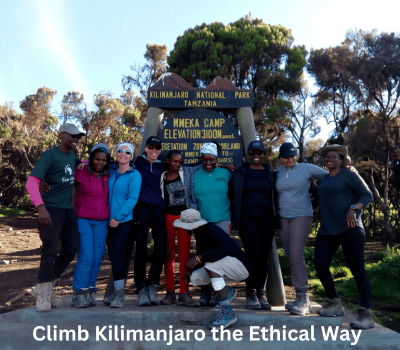What Should I Pack for a Kilimanjaro Climb?
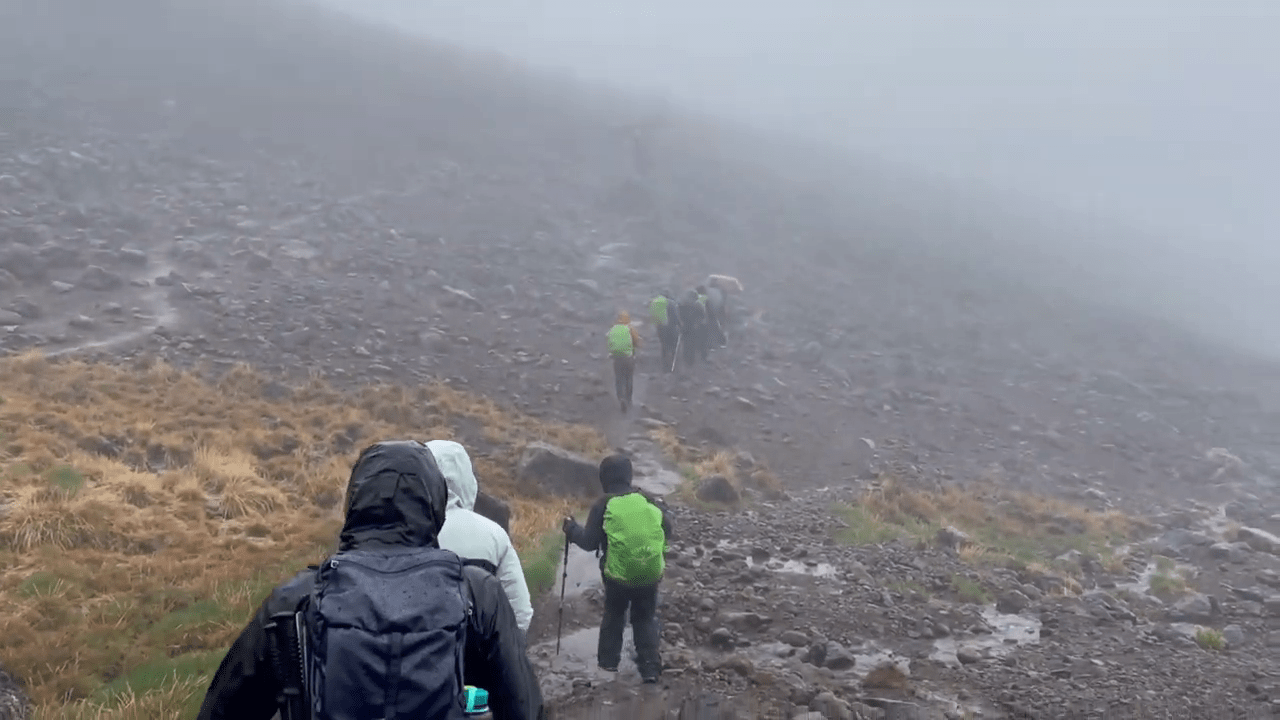
Introduction
Why Packing Right is Critical for Kilimanjaro Success
Mount Kilimanjaro is not just any hiking trip—it’s a journey across multiple climate zones, from humid rainforests to freezing glaciers. Packing the right gear isn’t just about comfort; it’s about survival and summit success.
The wrong gear can turn a dream climb into a miserable, even dangerous, experience. Proper clothing, footwear, sleeping gear, and personal items are all critical to handling everything the mountain throws at you.
When you climb with Eco-Africa Climbing, we provide a detailed checklist to ensure you’re fully prepared—and we even offer high-quality gear rentals if you’re missing something!
Avoiding Common Packing Mistakes
Many first-time trekkers make the mistake of overpacking (carrying too much) or underpacking (missing key essentials). Both can spell trouble at altitude. A smart pack is:
- Light enough for porters and daily trekking
- Complete with weather-appropriate layers
- Organized for easy access to essentials like snacks, headlamps, and rain gear
Let’s break it all down section by section so you know exactly what to bring!
Overview of Essential Kilimanjaro Packing List
Before we dive deep into each item, here’s a high-level overview of what you’ll need:
- Clothing: base, mid, and outer layers
- Sturdy hiking boots and camp shoes
- 4-season sleeping bag
- Daypack and duffel bag
- Trekking poles
- Hydration system
- First aid kit and personal medications
- Headlamp and extra batteries
- Snacks and electrolyte powders
- Toiletries and hygiene supplies
- Power bank for charging electronics
You can find a full downloadable checklist on our page: Kilimanjaro Gear List.
Clothing: Layering System Explained
Base Layers (Moisture-Wicking)
Your base layers are crucial for managing sweat and regulating body temperature. Cotton is a no-go because it absorbs moisture and cools your body dangerously fast.
Choose:
- Moisture-wicking thermal tops (synthetic or merino wool)
- Thermal leggings or tights
You’ll live in these layers during cold mornings and summit night.
Mid Layers (Insulation)
Mid-layers trap your body heat. You’ll need:
- Fleece jacket or thick softshell
- Insulated down or synthetic jacket
A good down jacket is critical when you’re battling temperatures as low as -20°C near the summit.
Outer Layers (Wind and Waterproof Shell)
Your outer layer must protect against rain, snow, and biting wind. You’ll need:
- Hardshell waterproof jacket with hood
- Waterproof pants
These layers are your armor against the mountain’s harshest conditions.
Footwear Essentials
Hiking Boots
Good boots are the foundation of a successful climb. Look for:
- High ankle support
- Waterproof membrane (Gore-Tex preferred)
- Broken-in (never new!) before the climb
Your boots need to be your best friends—breaking them in at least 4–6 weeks before your climb is essential to avoid blisters.
Camp Shoes
After long trekking days, you’ll want something light and easy to slip into around camp:
- Sandals with socks
- Light trainers
- Closed-toe preferred for cold nights
Socks and Gaiters
Bring multiple pairs of moisture-wicking hiking socks. Wool socks are excellent because they stay warm even when damp.
Optional: Gaiters are useful for protecting your lower legs from mud, dust, and water during wet conditions.
Headgear and Hand Protection
Hats for Sun and Cold
Protecting your head from the elements is critical at high altitudes. You’ll need two main types of hats:
- Sun hat: Wide-brimmed for shade during the hot, exposed lower sections.
- Warm hat: Fleece or wool beanie for cold nights and summit push.
Covering your head retains precious body heat—don’t underestimate it!
Gloves and Mittens
Your hands will suffer without proper insulation. Bring:
- Light inner gloves (for trekking at lower altitudes)
- Insulated, waterproof outer gloves or mittens (for summit night)
Layering your gloves gives you flexibility to adapt as temperatures change.
Sleeping Gear
Sleeping Bag (Importance of 4-Season Bags)
Temperatures at Barafu Camp and Uhuru Peak can drop below -15°C at night. You absolutely need a high-quality, 4-season sleeping bag rated at least to -10°C or lower.
We recommend renting the Mountain Hardwear Lamina™ -29°C sleeping bag from Eco-Africa Climbing for just $50 per trip if you don’t own a suitable one.
Check our full rental options here: Gear Rental List.
Sleeping Mat or Mattress
Porters will carry foam sleeping pads, but bringing an inflatable sleeping pad can add extra comfort and insulation from the cold ground.
Backpacks and Bags
Daypack Essentials
You’ll carry your daypack every day, so choose wisely. Key features:
- Capacity: 25–35 liters
- Internal frame for support
- Hydration bladder sleeve
- Rain cover included
Inside your daypack you’ll need:
- Rain jacket
- Water bottles or bladder
- Snacks
- First aid kit
- Camera or phone
- Warm hat and gloves
Duffel Bag for Porters
Porters will carry your main gear in a duffel bag. Requirements:
- Waterproof (or use a liner)
- Soft-sided, durable
- Limit weight to 15 kg (32 lbs)
Our team will weigh your bag before the trek to ensure it meets park regulations.
Accessories and Small Gear
Trekking Poles
Trekking poles are lifesavers for your knees and balance, especially during steep descents. Adjustable, collapsible poles are ideal for travel and trail flexibility.
Headlamp
A high-quality headlamp is critical, especially for summit night. Make sure it’s:
- Bright (at least 200 lumens)
- Has fresh and spare batteries
A headlamp keeps your hands free for trekking poles and hydration.
Sunglasses and Sunscreen
UV rays are brutal at high altitudes. Bring:
- Category 3 or 4 sunglasses (high UV protection)
- Broad-spectrum sunscreen (SPF 50+)
- Lip balm with SPF
Hydration and Nutrition Supplies
Water Bottles and Bladder System
Dehydration worsens altitude sickness. Plan for:
- Hydration bladder (2–3 liters)
- Backup water bottles (especially for summit night when bladders may freeze)
Personal Snacks
While meals are provided by Eco-Africa Climbing, energy bars, trail mix, candy, and electrolyte powders help maintain your energy between meals.
High-calorie, easy-to-carry snacks are the best choice.
Personal Health and Hygiene Items
First Aid Kit
You don’t need to carry a full hospital kit, but a personal first aid kit is a smart move. Include:
- Blister plasters (like Compeed)
- Ibuprofen or acetaminophen
- Anti-nausea medication
- Anti-diarrheal medication
- Personal prescriptions (enough for the whole trip)
Our guides carry a professional medical kit too, but having your own basics can make a huge difference for minor issues.
Toiletries
When it comes to toiletries, think lightweight and essentials-only. Pack:
- Toothbrush and travel toothpaste
- Biodegradable wet wipes (for washing)
- Small hand sanitizer
- Quick-dry travel towel
- Toilet paper (stored in a waterproof bag)
Medication and Altitude Sickness Prevention
Discuss with your doctor whether to bring Diamox for altitude sickness prevention.
Also, pack any necessary medications for personal health issues well in advance—you can’t easily get medicine on the mountain.
Electronics and Gadgets
Power Banks
There’s no electricity on the mountain. Bring at least one or two fully charged power banks to keep your phone, camera, and headlamp running.
Cameras and GPS Devices
Capture the epic journey! Lightweight digital cameras, GoPros, or smartphones are ideal. Some trekkers bring GPS watches or handheld devices to track elevation gains and distance.
Remember: extreme cold can drain batteries quickly, so keep electronics close to your body at night.
Renting Gear in Tanzania
What Can You Rent?
Not all gear needs to be bought new. Save money and baggage weight by renting:
- 4-season sleeping bags
- Down jackets
- Hiking poles
- Daypacks and duffel bags
- Gaiters and rain gear
Eco-Africa Climbing offers high-quality rentals. Check the full list and pricing here: Gear Rental Price List.
Recommended Rental Shops
If you book your climb with us, we’ll guide you to trusted, quality rental shops right in Moshi. No need to stress about bringing bulky gear from home.
Special Packing Tips for Women
Clothing Adjustments
Ladies should plan for temperature swings with versatile layering. Extra essentials include:
- Sports bras (quick-dry and supportive)
- Leggings (great under waterproof pants)
- Lightweight long sleeve tops for modesty and sun protection
Toiletry Recommendations
Helpful extras include:
- Menstrual supplies (tampons, menstrual cup, or pads)
- Ziplock bags for waste disposal
- Small personal hygiene kit
You can also view our women-specific packing checklist here:
Women’s Kilimanjaro Packing List (PDF).
Eco-Africa Climbing Gear Support
Full Gear Checklist Download
Download our complete checklist here to make sure you miss nothing:
Kilimanjaro Gear List.
Rental Gear Pricing Info
Need rental options? We’ve got you covered with the best gear and pricing.
See all rental options here:
Eco-Africa Gear Rentals.
FAQs About Packing for Kilimanjaro
Can I rent all my gear instead of buying?
Yes, you can rent most major items like sleeping bags, down jackets, and trekking poles. Eco-Africa Climbing offers quality rentals so you can travel light.
How cold does it really get on Kilimanjaro?
Near the summit, temperatures can drop to -15°C (5°F) or lower, especially during summit night. Packing a -10°C or lower sleeping bag and proper layers is essential.
What’s the weight limit for my duffel bag?
Porters are limited to carrying 15 kg (32 lbs) per climber. Your duffel bag must meet this restriction, and we will weigh it before starting the trek.
Can I do the climb with just a daypack?
You’ll carry your daypack daily, but your larger duffel bag is carried by porters between camps. Pack smartly to keep your daypack light and efficient.
Are there special gear requirements for women?
Mostly the same essentials, but women should plan for sports bras, menstrual hygiene supplies, and lightweight, layered clothing. See the special checklist:
Women’s Kilimanjaro Packing List.
Helpful Resources for Gear and Packing
- Complete Kilimanjaro Gear List
- What to Carry in Your Daypack
- What to Pack in Your Duffel Bag
- 12-Week Fitness and Training Program
- Altitude Sickness Awareness
- What Food You Will Eat on Kilimanjaro
Conclusion: Pack Smart, Climb Strong
Your Kilimanjaro climb will be one of the most memorable adventures of your life — but only if you prepare the right way. Packing smartly for every climate zone you’ll cross is crucial for comfort, safety, and summit success.
By following this ultimate Kilimanjaro packing guide and working with a trusted team like Eco-Africa Climbing, you’ll set yourself up for an epic experience from start to summit.
Need help getting ready?
Contact Eco-Africa Climbing today — we’ll walk you through every step of your Kilimanjaro journey, starting with your perfect packing list!
Share:
Related Posts
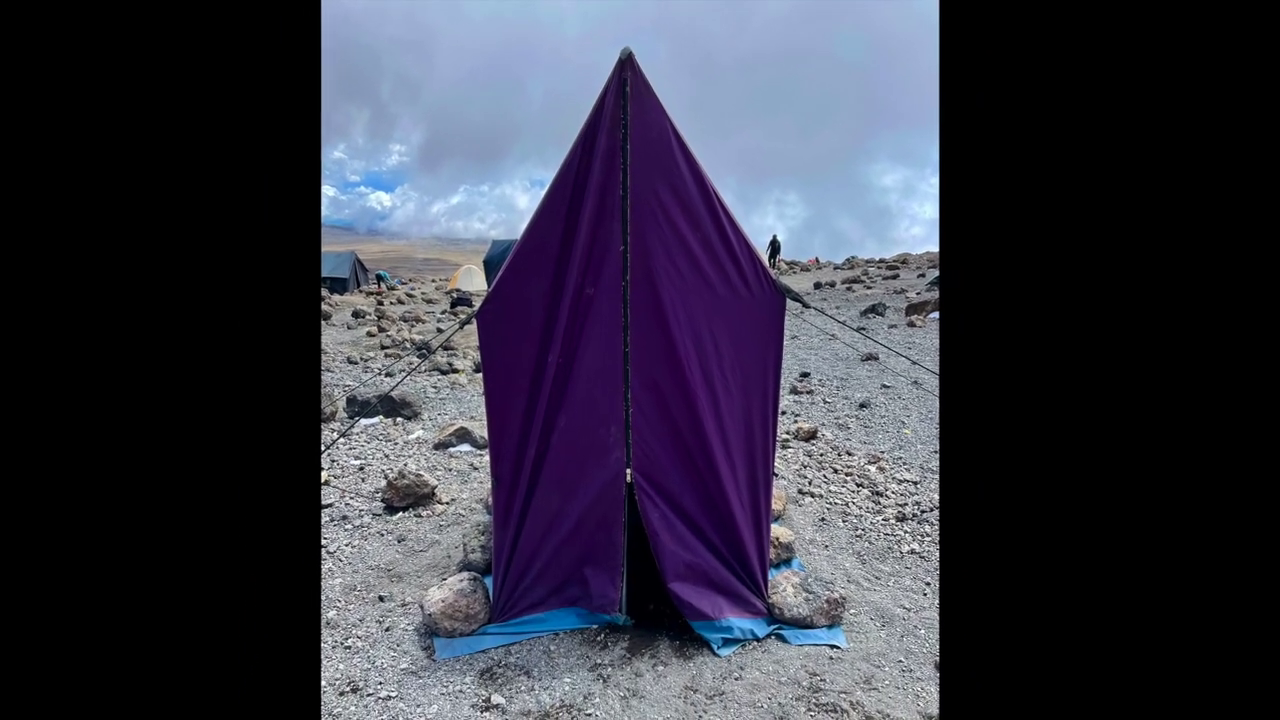
bathroom on mountain kilimanjaro
Bathroom on Mountain Kilimanjaro: What to Expect and How to Prepare Introduction One of the most common — and least discussed — questions from people

Are Guides Readily Available in Tanzania Without Prior Booking?
Are Guides Readily Available in Tanzania Without Prior Booking? Introduction: Should You Risk Climbing Without Pre-Booking? Climbing Mount Kilimanjaro is a dream for many adventurers.
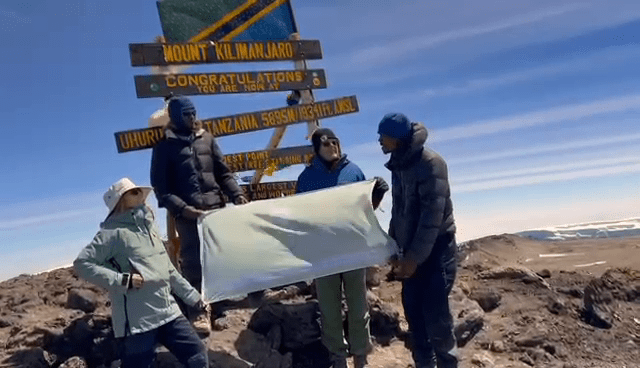
How Can I Find a Reliable Local Guide for My Kilimanjaro Expedition?
How Can I Find a Reliable Local Guide for My Kilimanjaro Expedition? Introduction: Why the Right Guide Is Key to Kilimanjaro Success Climbing Mount Kilimanjaro
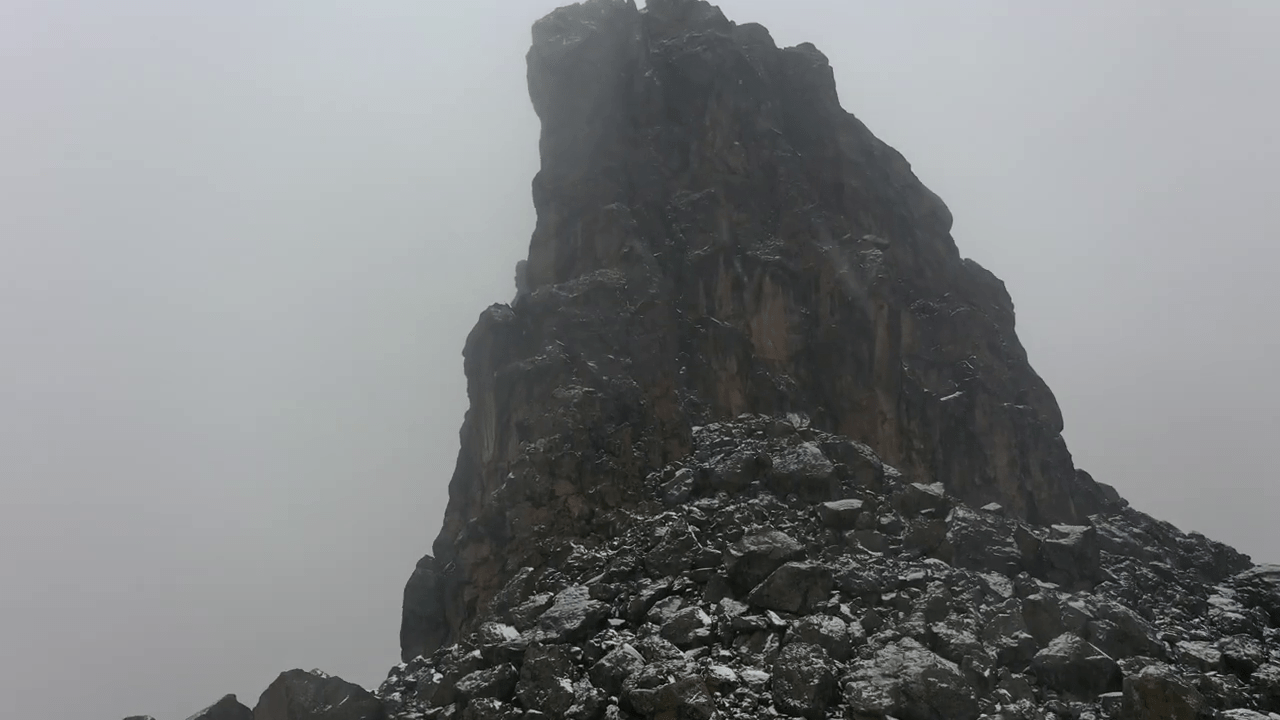
Is Climbing Kilimanjaro Dangerous for Individuals Without Mountaineering Experience?
Is Climbing Kilimanjaro Dangerous for Individuals Without Mountaineering Experience? Introduction: The Myth of Danger and Experience Many aspiring adventurers wonder if climbing Mount Kilimanjaro is
